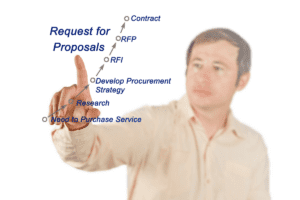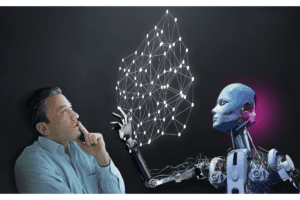Unknown Unknowns: The Real Power Of The Rumsfeld Matrix

You may worry about risks that just seem to appear out of nowhere, leaving your team scrambling. Unknown Unknows: The Real Power Of The Rumsfeld Matrix shows how most leaders miss the biggest dangers because they focus only on what they already know or can guess.
This blog breaks down the Rumsfeld matrix and explains why spotting unknown unknowns is key for better decision-making, risk management, and smarter innovation in 2025. Discover a tool that helps you prepare your IT projects for anything; even surprises no one sees coming.
Understanding the Rumsfeld Matrix
The Rumsfeld Matrix helps leaders think clearly about knowledge. It shows four types: known knowns, known unknowns, unknown knowns, and unknown unknowns. Each type gives a different view on what we know and don’t know.
This table breaks it down simply for better understanding….
The Four Categories of Knowledge
– Known Knowns: Things you know that you know, like basic system uptime or user counts.
– Known Unknowns: Gaps you can spot, such as missing disaster recovery plans or untested failovers.
– Unknown Knowns: Useful facts hidden in your team’s experience; think of missed lessons from an old project or overlooked code in legacy systems.
– Unknown Unknowns: Blind spots; risks and surprises no one expects, like zero-day vulnerabilities or a sudden AI-driven shift.
There are known knowns; there are things we know we know… but there are also unknown unknowns. — Donald Rumsfeld
Project managers use frameworks like the Johari Window and risk assessment tools to spot each category. To cover all bases, leaders blend scenario planning with predictive analytics and machine learning models.
Facing unknown-unknowns protects tech teams from shocks like the BP oil spill, generative AI booms, or cyberattacks hiding in plain sight.
Rumsfeld Matrix article briefing

This article breaks down the Rumsfeld Matrix, a decision-making framework made famous by Secretary of Defense Donald Rumsfeld in 2002. It also shows how “Black Swan events” (see below) like the 2008 financial crash, COVID-19, and generative artificial intelligence fit as true unknown unknowns; events no weather forecast or risk register could have flagged early.
You will see practical ways to spot weak signals and build resilience so your team can make better choices even when data is missing or the future looks uncertain.
The Power of Unknown Unknowns

The power of unknown unknowns lies in their hidden nature. These gaps can shape how we plan, adapt, and respond. Blind spots might lead to missed opportunities or poor choices. Traditional tools like SWOT analysis often can’t catch these surprises.
Leaders who ignore them risk being caught off guard when it matters most….
Why this quadrant matters more than the rest.
Unknown unknowns catch even experts off guard. These are risks no one expects, like the tsunami that triggered Fukushima Daiichi’s nuclear disaster in 2011 or the COVID pandemic in 2020.
No risk register or SWOT chart had these events listed. Decision-makers cannot predict such hazards, yet their effects can change everything for IT delivery teams and tech firms overnight.
Blind spots hide major threats but also big opportunities for creativity and innovation. Artificial intelligence helps spot patterns inside known unknowns and unknown knowns, but true black swans remain hidden until they strike.
Smart leaders use scenario planning and ground penetrating radar tools to prepare action plans—even with limited information—so they’re ready to face wave after wave of surprises.
“There are things we do not know we do not know.” — Donald Rumsfeld
How blind spots shape strategy, innovation, and crisis response.
Blind spots in knowledge can make or break your decision making process. Leaders often miss the Unknown Unknowns, which hide real risks and new opportunities. In 2008, for example, banks trusted efficient market theory and missed signals that led to financial collapse.
Relying only on tools like SWOT or risk registers leaves teams open to surprises that shake strategy, slow innovation, or spark crisis.
Natural disasters like Hurricane Katrina and events such as Deepwater Horizon show what happens when organizations ignore uncertainties or base rate neglect. Teams must search for hidden skills, the unknown knowns, within their ranks to boost productivity during emergencies.
Using big data, AI-driven research, and scenario planning helps find these blind spots faster than before. The Rumsfeld Matrix encourages leaders to ask harder questions so they can prepare better for tsunamis of change instead of relying on hindsight after a catastrophe hits.
Where traditional tools (SWOT, risk registers) fall short.
Classic tools like SWOT analysis and risk registers help spot threats that you can see coming. They do well with known risks, such as project delays, tech failures, or leaks in Google Drive security.
Yet, these methods miss the danger of unknown-unknowns—the surprises you cannot list or even imagine.
As early as 1982, “unknown unknowns” explained disasters like metal fatigue in the de Havilland Comet crash. The U.S. military and aerospace teams used “unknown-unknownss” to describe what they could not forecast during missions or health crises.
Regular checklists look backward at past issues rather than forward into hidden corners of uncertainty. These limits mean leaders may fall into traps related to privacy breaches, sudden cyber-attacks, or Black Swan events, such as the 2008 financial crisis or a generative AI boom, which escape all risk register lines.
Relying only on familiar tools weakens your ability to react fast when things move outside predictions set by theory of knowledge models. Real wisdom for IT Delivery Managers comes from knowing there are always new reasons for concern; even if no one has seen them coming yet.
Black Swans: The Extreme Unknown Unknowns

Black Swans are rare events that come with big surprises. They can change everything, like 9/11 or the COVID pandemic. These events show us just how unpredictable life can be and why we must be ready for anything.
Understanding Black Swans helps leaders think about risks in new ways. It’s all part of tackling what we don’t see coming… and preparing ourselves to act fast when it matters most.
What Are Black Swans? (Taleb’s definition)
Nassim Taleb defines black swans as rare events that are hard to predict and have huge impacts. These can shake up technology, business, or even whole societies in ways no one saw coming.
Some examples include the 9/11 attacks, the 2008 financial crash, the COVID-19 pandemic, and the sudden rise of generative AI. Black swans sit in the unknown unknowns section of the Rumsfeld Matrix.
I know that I know nothing. — Socrates
Black swan events often catch leaders off guard because they do not appear on most risk registers or SWOT analyses. They show why overconfidence in forecasts can backfire. Spotting early signals is tough but matters for strategy and flood-control planning alike.
Understanding these extreme unknowns helps IT delivery managers see where traditional tools fail and why flexible thinking aids in decision-making during catastrophes like earthquakes or cyber threats never seen before.
Examples of Black Swan Events (9/11, 2008 crash, COVID, generative AI boom)
The September 11 attacks in 2001 shocked the world and changed how governments handle security. The Commission to Assess the Ballistic Missile Threat never predicted such an event.
In 2008, a global financial crash hit fast and hard. Banks failed, jobs vanished, and risk models proved useless. Forecasting tools like risk registers missed these huge unknowns.
In early 2020, the COVID-19 pandemic spread quickly across countries. Leaders everywhere faced new threats they could not plan for using normal simulations or hurricane center warnings.
Most organizations had no playbook for daily remote work or massive supply chain breakdowns. Now, generative AI is booming with little warning; experts did not foresee its speed or impact on work and society.
Each of these events shows why leaders must accept there are unknown unknowns—shocks that reshape norms overnight—making frameworks like the Rumsfeld Matrix vital for IT delivery managers who manage risk with limited information and evolving technology like e-mail systems and cloud platforms.
Why Black Swans Matter in Risk and Strategy
Black Swan events, as described by Nassim Nicholas Taleb, change everything fast. These rare shocks—like 9/11, the 2008 financial crash, COVID-19, or the sudden rise of generative AI—are not on your risk register.
They even slip past a SWOT analysis or traditional risk frameworks used in IT delivery. Black Swans show up where you have Unknown Unknowns on the Rumsfeld Matrix.
Ignoring these extreme surprises can wreck plans and budgets overnight. Some leaders thought they knew all threats before Abu Ghraib or the Ballistic Missile Commission report but got blindsided anyway.
Even experts at places like the National Hurricane Center must admit that some storms break every rulebook. Black Swans force teams to rethink controls and fallback strategies because regular playbooks often fail big time.
Smart IT managers use this insight to build flexible systems and keep their eyes open for odd signals—indicators that something unexpected is brewing. That mindset is real leverage against disaster…and it keeps strategy sharp in a world filled with both known and unknown risks.
How Black Swans Fit Into the Rumsfeld Matrix (subset of unknown unknowns, not “vs.”)
Black Swan events sit deep inside the “unknown unknowns” box of the Rumsfeld Matrix. Nassim Nicholas Taleb made the Black Swan theory famous. He explained that some shocks, like 9/11, the 2008 market crash, COVID-19, and even generative AI in the early 2020s, are both rare and impossible to see coming until after they happen.
You cannot list these events as risks on a standard SWOT analysis or risk register. They do not compete with other unknowns; instead, they form an extreme subset.
Industry leaders in aerospace and defense have used terms like “unknown-unknowns” since the late 1960s for such surprises. All Black Swans are “unknown unknowns,” but not every “unknown unknown” becomes a Black Swan event.
These moments reshape markets fast and can expose limits in current knowledge or models—a lesson seen during crises like Abu Ghraib or sudden shifts in cybersecurity threats from zero-day vulnerabilities.
The greatest danger is not what we know—or what we don’t—but what we don’t know we don’t know.
Being Ready for Anything, Not Everything
Being prepared for the unexpected is key. You can’t predict every challenge, but you can set up safety nets that help you respond quickly and effectively. Use early warning signals to stay alert and take action when needed…
It’s about being wise with your strategy, even if some unknowns lurk ahead.
Why a Starting Point Matters in Unknown Unknowns
A starting point is key in facing Unknown Unknowns. It builds a strong base for understanding risks and gaps in knowledge. Identifying your first thoughts helps spot what you don’t know yet.
You can then recognize potential unknown threats.
This approach encourages clear decision-making. Knowing where to begin reveals areas needing attention. A solid foundation allows better use of AI tools with the Rumsfeld Matrix, making it easier to handle challenges as they arise.
Understanding your initial thoughts also highlights biases that could block insight into those unknowns.
High-Level Contingency as a Safety Net Using Markers as Early Warning Signals (indicators & warnings, PMI triggers)
High-level contingency acts as a safety net. It helps teams prepare for unknowns that can arise in projects. Early warning signals are key. These indicators alert managers to potential problems before they happen.
Using tools like PMI triggers can enhance readiness. They provide data points showing where issues might emerge. This allows IT Delivery Managers to act swiftly instead of freezing up when faced with uncertainties.
By spotting these markers, teams can shift from paralysis to action, making strategic decisions with more confidence and clarity in an unpredictable environment.
From Paralysis to Action When Categories Converge
Blind spots can trap teams in indecision. Leaders need to identify what they know and what they don’t know. The Rumsfeld Matrix helps break down this process into clear categories.
It allows IT Delivery Managers to see where gaps exist in their knowledge.
Using tools like PMI triggers and ground-penetrating radar can guide teams toward action. These methods show early warning signals for emerging risks, turning uncertainty into strategy.
By regularly reviewing assumptions, managers can adapt quickly, avoiding paralysis by analysis. Focusing on unknown knowns reduces surprises and drives innovation forward.
Applying the Rumsfeld Matrix in Today’s World
The Rumsfeld Matrix aids IT Delivery Managers in understanding risk more effectively. It illustrates four types of knowledge: Known Knowns, Known Unknowns, Unknown Knowns, and Unknown Unknowns.
With tools like strategic foresight and scenario planning, managers can explore BANI and VUCA frameworks. These assist teams in preparing for change in their projects.
Cybersecurity is essential today. Zero-day vulnerabilities are subtle threats that can cause significant harm. AI risks also increase as machine behaviors become more intricate; this adds to the unknowns we face.
Communicating uncertainty with executives is crucial to handling these challenges effectively. The next section will examine how being prepared for anything—while not predicting everything—can improve project outcomes.
Strategic foresight & scenario planning (BANI, VUCA, horizon scanning)
Strategic foresight helps teams prepare for the unknown. BANI and VUCA are frameworks that guide this process. They offer structured ways to think about risks and uncertainties. BANI stands for Brittle, Anxious, Nonlinear, and Incomprehensible.
VUCA means Volatile, Uncertain, Complex, and Ambiguous.
Using horizon scanning is key to identifying future trends. This lets IT Delivery Managers spot changes before they happen. It gives them a chance to adapt strategies accordingly. AI tools can also play a role by analyzing large data sets for insights but cannot replace human creativity or intuition in decision-making processes.
Cybersecurity & zero-day vulnerabilities
Cybersecurity faces many challenges today, especially with zero-day vulnerabilities. These are flaws that hackers exploit before anyone knows they exist. Rumsfeld’s framework helps in understanding these unknowns better.
Cybersecurity managers must classify threats as known or unknown to protect their systems effectively.
AI tools can spot patterns in both kinds of vulnerabilities. They enhance our ability to detect risks we might not see on our own. Yet, human intuition remains vital; machines can’t replace it completely.
Balancing AI’s power with human oversight is key for strong cybersecurity strategies and risk management. Without this balance, managing threats will become even harder as technology continues evolving rapidly.
AI risk & emergent behaviors
AI has its strengths, but it also has limits. It can help find Known Unknowns and Unknown Knowns using data analysis. This is crucial for spotting potential risks. Still, AI can’t predict Unknown Unknowns.
These are surprises that catch everyone off guard.
Emergent behaviors can add to the risk. They arise when systems react in unexpected ways. A good example is how financial markets behave unpredictably due to unseen factors; usually, AI struggles here too.
Relying only on AI could lead to blind spots in decision-making, as it lacks human intuition and ethical judgment. IT leaders need to be aware of these risks while planning their strategy and responses effectively for future scenarios involving Black Swans or other unknown events.
Communicating uncertainty to executives
Understanding uncertainty is key for IT leaders. The Rumsfeld Matrix helps explain what we know and what we don’t. This framework is useful when sharing the limits of knowledge with executives.
It reflects the need for transparency, as noted in Rumsfeld’s memoir, “Known and Unknown.”.
In high-stakes settings, it’s vital to communicate risks clearly. Traditional tools like SWOT analysis may not capture all threats, especially in cybersecurity where zero-day vulnerabilities lurk unnoticed by both attackers and defenders.
By using the matrix to highlight unknowns, leaders can guide strategies effectively during crises or change.
Conclusion
Unknown unknowns hold real power. They help leaders spot risks that others miss. The Rumsfeld Matrix is a tool for this challenge. It guides us in preparing for the unpredictable. Embracing these ideas can spark innovation and improve responses to crises.
Stay alert, stay ready; you’ll be better equipped for what comes next.
If you liked this article, remember to subscribe to MiamiCloud.com. Connect. Learn. Innovate.






